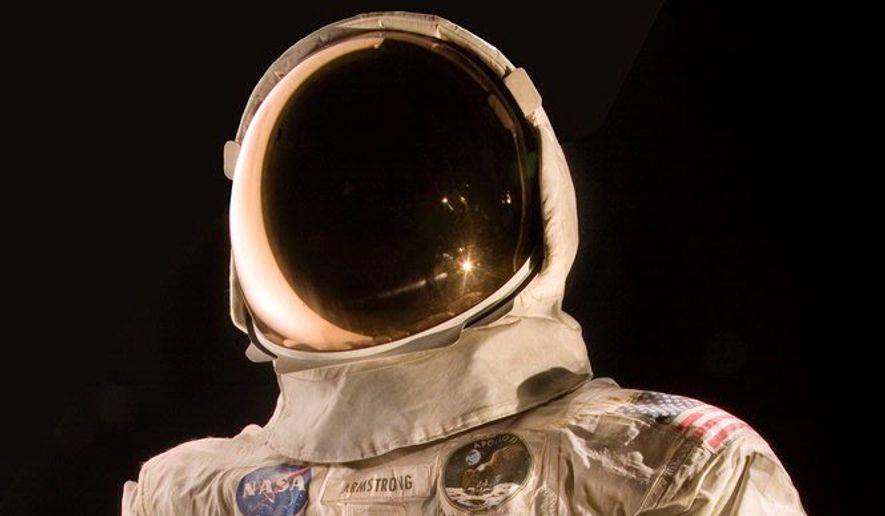The Smithsonian’s National Air and Space Museum is making one giant leap for visitors with its display of the gloves and helmet worn by Neil Armstrong when he became the first man to walk on the moon.
In honor of the landing’s 47th anniversary, the museum will display Armstrong’s gloves and helmet for 12 months at the Steven F. Udvar-Hazy Center at Washington Dulles International Airport in Chantilly, Virginia.
“This is just a teaser of what’s to come in three years,” said Cathleen Lewis, curator of the museum’s international space programs and spacesuits. “It’s giving the public a status report of what we’ve done so far, what we’ve learned and what we hope to find out in the future.”
Armstrong’s gloves and helmet are only the beginning for future space exhibits. Armstrong’s full suit will be on display for the 50th anniversary of the moon landing in 2019. In 2020, the “Destination Moon” exhibit will feature the full space suit, along with other artifacts, like the Apollo 11 command module Columbia.
Last July, the museum began a Kickstarter crowd-funding campaign called “Reboot the Suit” in an effort to conserve Armstrong’s spacesuit. The effort raised its initial target of $500,000 in just five days. The final amount raised — $719,779 — was more than enough to cover costs for the suit’s conservation and display.
“A lot of the preservation we do is examination and documentation of the space suit materials,” said Lisa Young, objects curator for the Air and Space Museum. “Most research is about finding a way to display them in the right environment, so they won’t degrade. The challenge is handling this complex material where things age at different rates.”
SEE ALSO: Donald Trump’s Virginia visit a slap to Tim Kaine
According to Alison Mitchell, the museum’s public affairs specialist, federal funding covers only a small percentage of total conservation budget, so fundraising is necessary. “Reboot the Suit” was the museum’s first Kickstarter campaign.
The museum is involving the public once again by asking for photographs taken of the glove, helmet and spacesuit when the artifacts went in a national tour in the 1970s.
“Dig through your files, page through your scrapbooks, or pilfer your grandparents’ memorabilia and help us find photographs, newspaper clippings, or anything that shows the spacesuit on display,” the announcement reads.
An estimated 500 million people watched Armstrong land on the moon on July 20, 1969, marking a victory for the United States in the space race.
“The significant thing about the Apollo mission is that it brought not only Americans together with a sense of pride, but it was witnessed all over the world,” space history curator Allan Needell says in a Smithsonian video. “It was shared as a human accomplishment, in which we came in peace for all mankind.”
After the moon landing, Armstrong taught aerospace engineering at the University of Cincinnati from 1971 to 1979. He received the Presidential Medal of Freedom, the Congressional Space Medal of Honor and numerous other awards before his death in 2012 at the age of 82.
SEE ALSO: Prince George’s County Council considers 2 new at-large seats
• Emily Kim can be reached at ekim@washingtontimes.com.




Please read our comment policy before commenting.